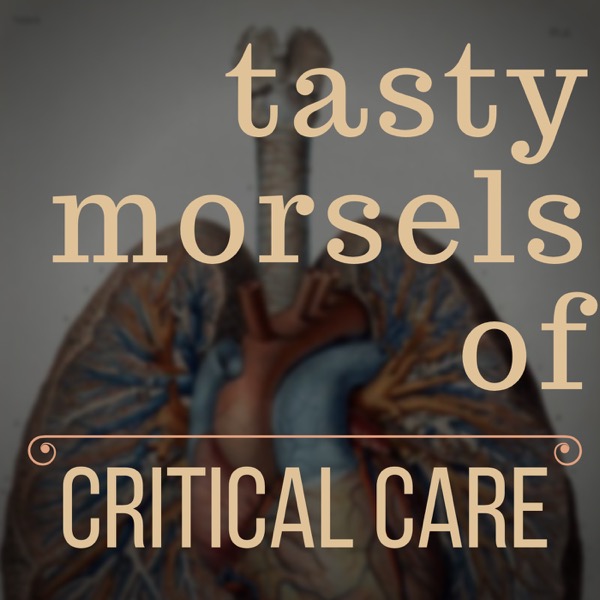Tasty Morsels of Critical Care 035 | When to start CRRT
Tasty Morsels of Critical Care - A podcast by Andy Neill - Mondays

Welcome back to the tasty morsels of critical care podcast. A meandering monologue through critical care fellowship exam preparation. Today we’ll talk about CRRT timing. When should your critically ill patient take a spin on the green machine? From an exam point of view this can go a few directions. You can go core physiology or you can go down the literature route. I think both are worth covering. Oh Chapter 48 has a list of indications that include: * volume overload * electrolyte issues – classically refractory hyperkalaemia * severe acidosis * uraemic symptoms inc pericarditis * progressive AKI (oliguia or anuria, high creat/urea) * Oh also has temp>40 as an indication * Dialysable toxin These all seem fairly reasonable. There is an interesting concept called the furosemide stress test that was first described by Chawla in 2013 and then repeated by Rewa in 2019. The concept here is that you can use the response to furosemide to predict the need for CRRT. The dose is between 1 and 1.5mg/kg of furosemide looking for >200 mls of urine in the first 2 hrs. If it’s less then wheel out the green machine and get started. Of note it is not used to determine who is ready to stop CRRT which seems to be a much slippier beast that i’ll mention at the end. Physiology over and done with for now let’s look at the literature that looks at this question. The papers here are all classics in intensive care and a careful student of the discipline should have a passing familiarity with all of them (and I am not even going to cover all of them!) Once upon time there was the AKIKI trial led by Gaudry and published in NEJM in 2016. This was a French study (side bar – i know the locations are largely irrelevant to the science here but the location makes it so much easier for me to remember as I can picture a polo necked french man with onions round his neck as a means to remember the paper). Anyhow. Once you had stage III AKI then you could be randomised to CRRT or wait till a solid indication like hyperkalaemia developed. They included 600 mainly medically septic and ventilated patients. Mortality was pretty much the same and of note only 50% actually ended up needing CRRT in the delayed group which is a recurrent theme worth noticing. In the same year, Zarbock and the Germans published in JAMA the ELAIN trial. Again, randomised but single centre and enrolled patients at an earlier stage (stage 2 by KDIGO). They got 200 pts with a 40% v 50% mortality favouring early CRRT. Of note these were almost all surgery patients but the mortality benefit was big enough to attract attention with the idea that getting in early with CRRT was key. Next enter the IDEAL-ICU trial by Barbar in 2018 which is yet another French multi centre RCT which randomised septic shock patients to CRRT or not at 12 hrs after meeting the F on the RIFLE criteria. They wanted 800 pts and got 500 pts and abandoned it due to futility with no difference between the groups. Of note again almost half in the delayed group did not end up getting CRRT. Now enter the START-AKI trial, the most recent and potentially practice changing study in the field. This is one of the current generation of ICU mega trials where all the great and good critical trials groups get together and put out a trial to end all trials. They randomised at 170 different sites, and included patients with a stage 2 or 3 AKI to either immediate CRRT or wait till a traditional indication developed. This trial took in 3000 patients and found no benefit of the early CRRT but again noted that 40% in the delayed group never needed CRRT. Putting this altogether it seems that we probably pull the trigger on CRRT a little early. I know when i see someone on 2 pressors that are both escalating and ...
